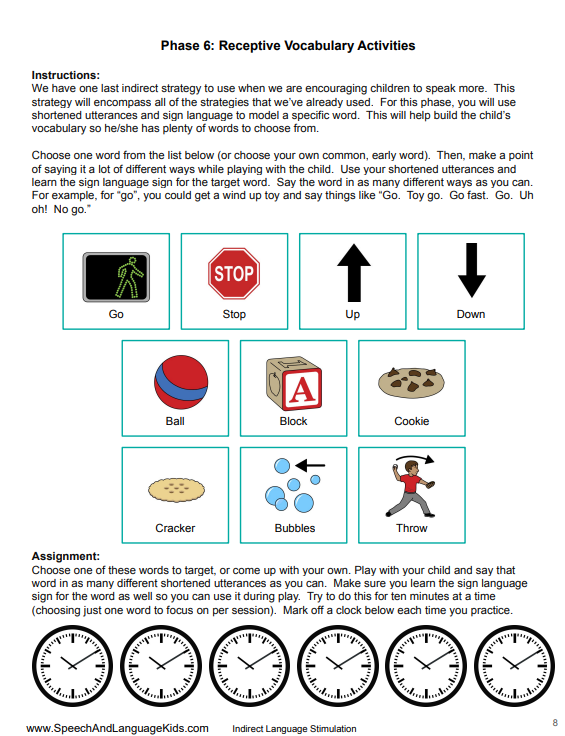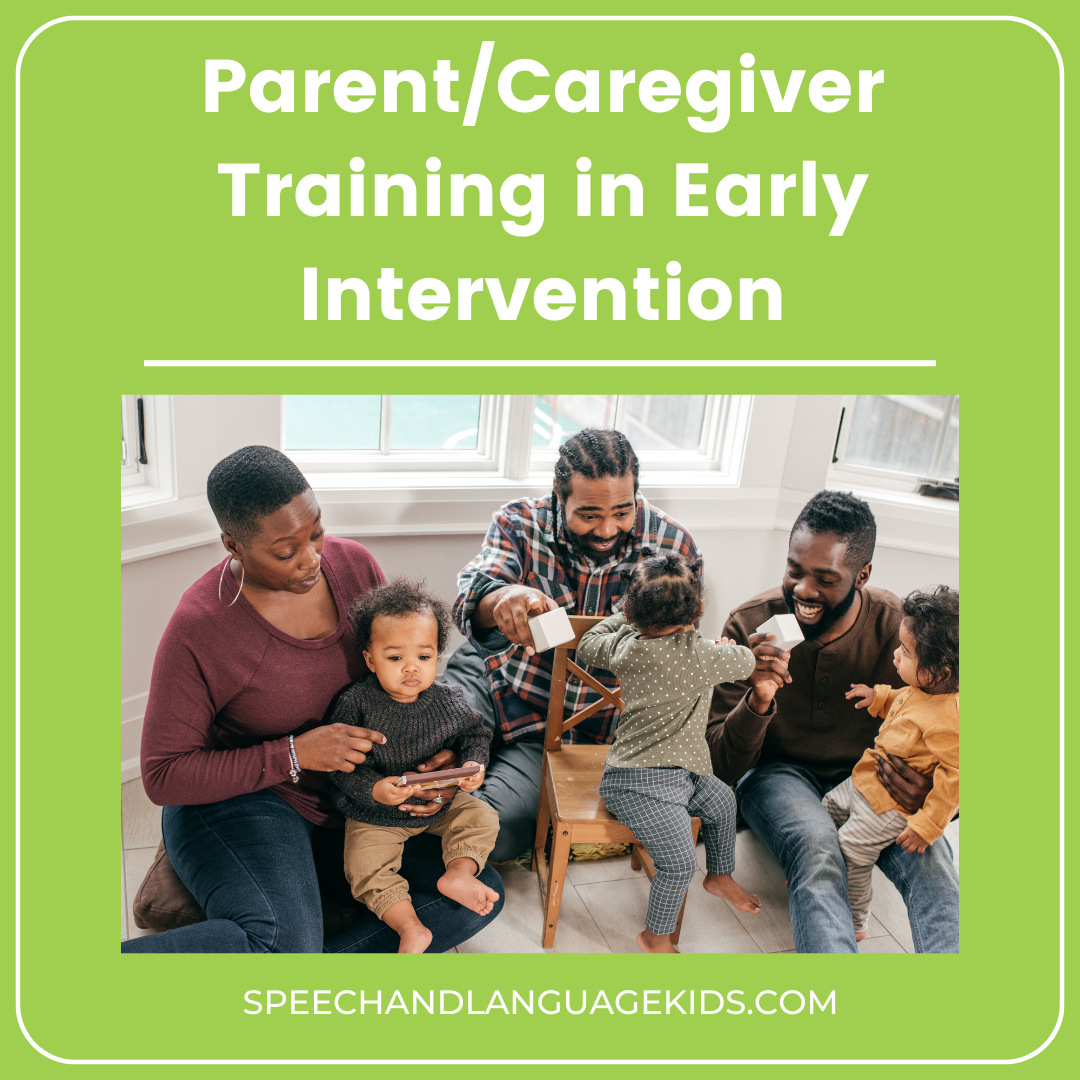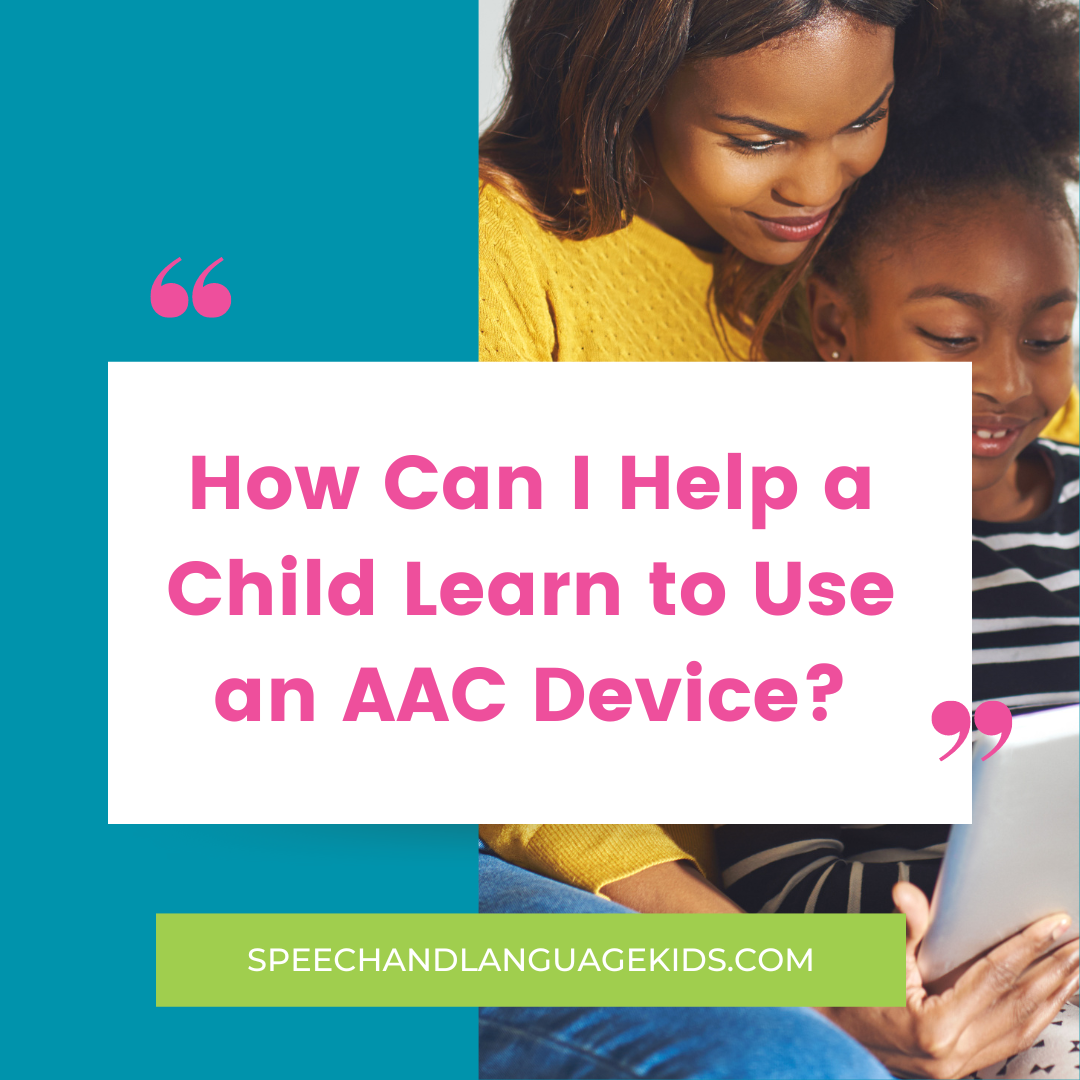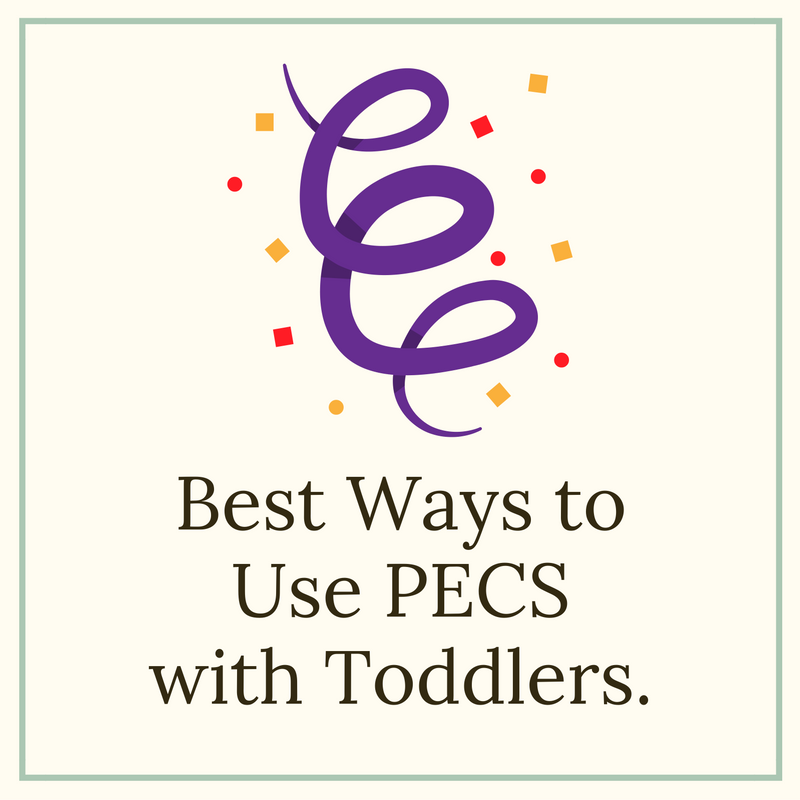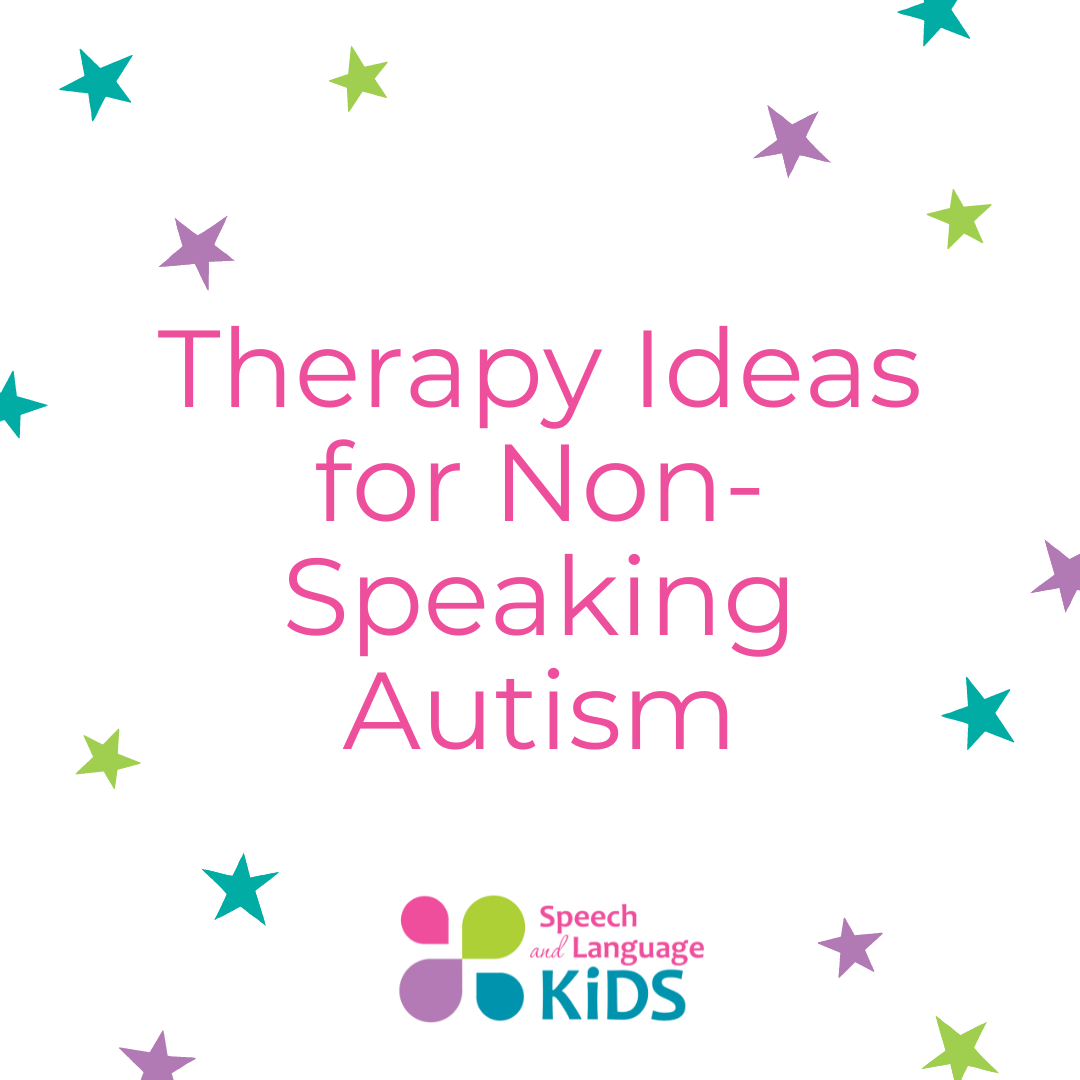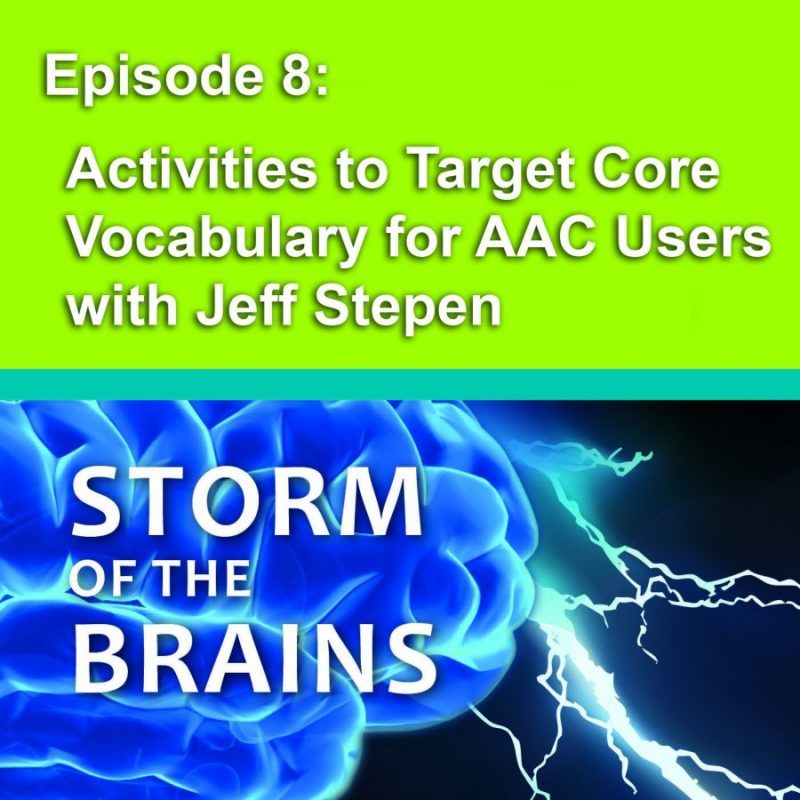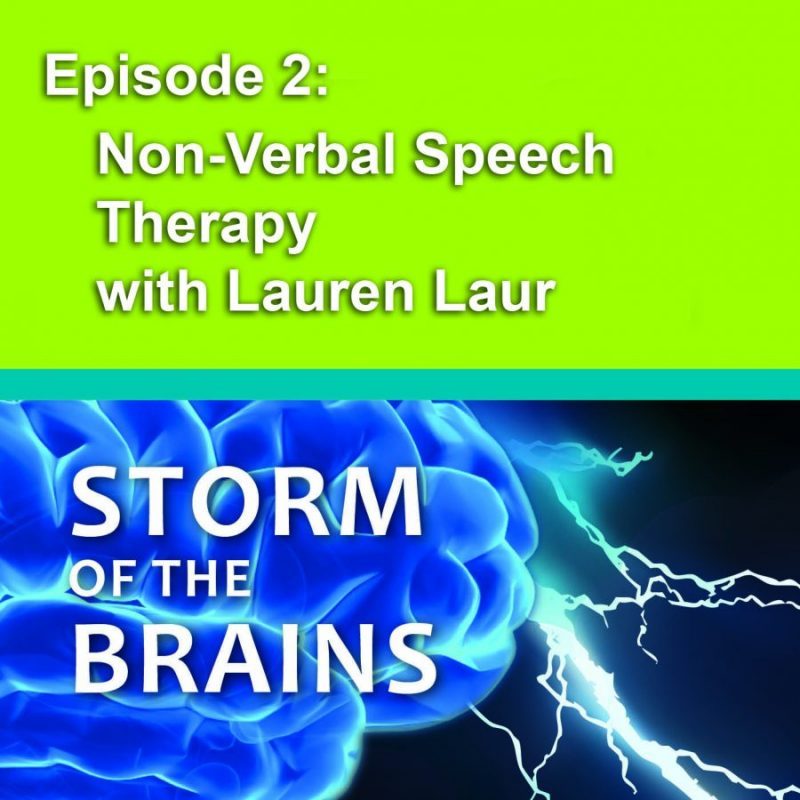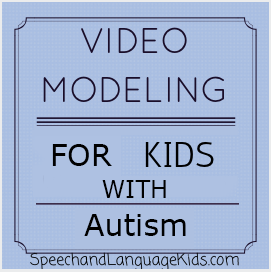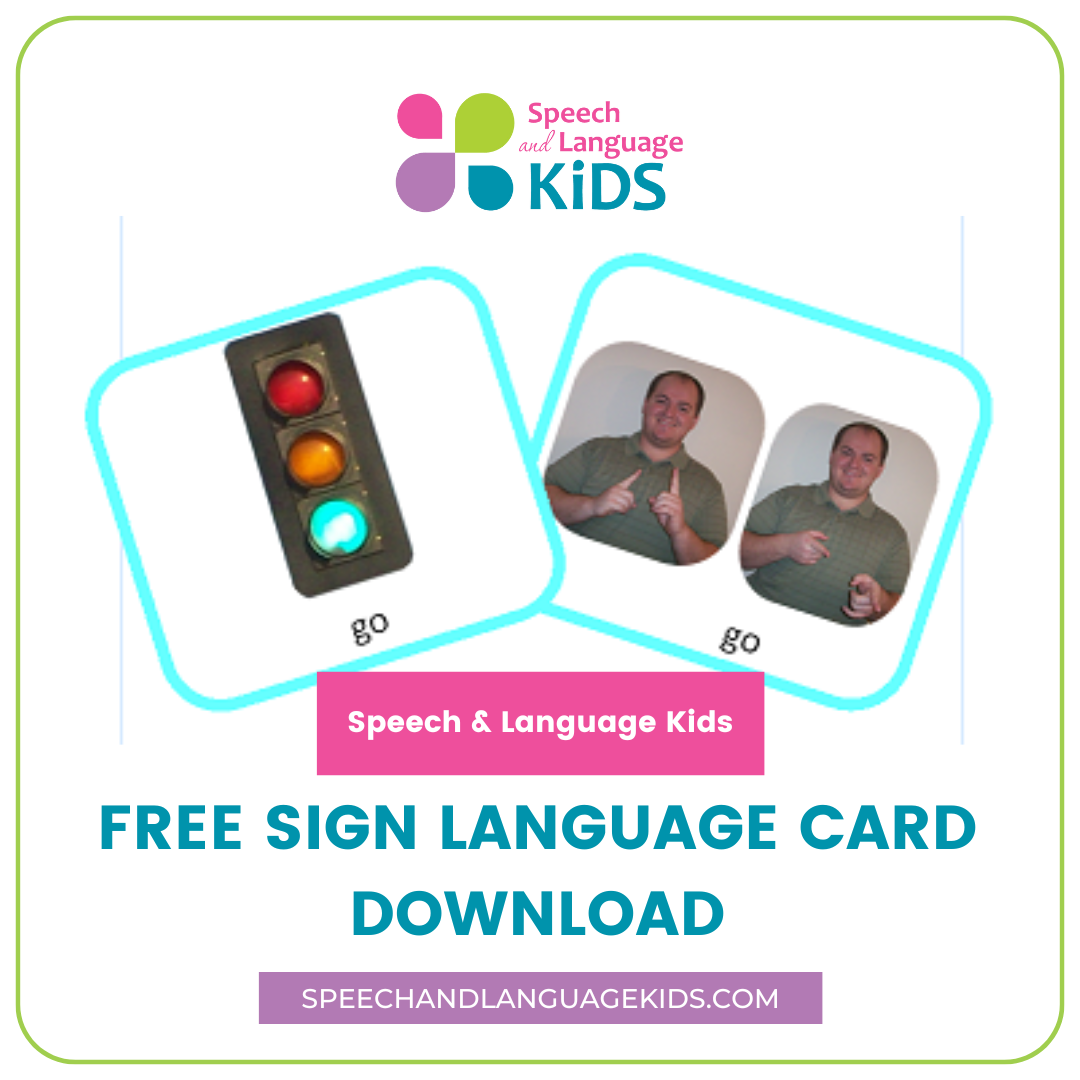Tips for Late Talkers:
How to Help at Home or in Speech Therapy
According to the Hanen Centre Website, a late talker is defined as a child that is 18-30 months of age who seems to understand language well but does not talk or say words as much as is expected for a child that age. Late talkers are typically developing well in other areas such as play skills, motor skills, thinking skills, etc.
Is my Child a Late Talker?
The following guidelines can help you determine if your child’s vocabulary is appropriate for his or her age. If your child has not yet reached these milestones, he or she should be seen by a speech-language pathologist:
- 18 month old: Should use least 20 words, including different types of words, such as nouns (“baby”, “cookie”), verbs (“eat”, “go”), prepositions (“up”, “down”), adjectives (“hot”, “sleepy”), and social words (“hi”, “bye”).
- 24 month old: Should use at least 100 words and combine 2 words together. These word combinations should be generated by the child, and not be combinations that are “memorized chunks” of language, such as “thank you”, “bye bye”, “all gone”, or “What’s that?”. Examples of true word combinations would be “doggie gone”, “eat cookie”, or “dirty hands”.
Will a Late Talker Grow Out of It?
Because this group of children is progressing so well in other areas of development, parents and others may assume that they will catch up on their own. Indeed, many late talkers do “grow out of it”, but many do not. It can be difficult to predict which children will not catch up to their peers. However, a list of risk factors has been identified, which suggest that a child is more likely to have continuing language difficulties [4]. These include:
- quiet as an infant; little babbling
- a history of ear infections
- limited number of consonant sounds (eg. p, b, m, t, d, n, y, k, g, etc.)
- does not link pretend ideas and actions together while playing
- does not imitate (copy) words
- uses mostly nouns (names of people, places, things), and few verbs (action words)
- difficulty playing with peers (social skills)
- a family history of communication delay, learning or academic difficulties
- a mild comprehension (understanding) delay for his or her age
- uses few gestures to communicate
What Can I Do as a Parent of a Late Talker?
Being a parent of a late talker can be very scary. You have probably received a ton of different advice from well-meaning parents and professionals who have told you what they think you should be doing to help your child. Keep in mind that some late talkers do learn to speak normally on their own without any speech therapy or interventions at all. However, there is no way to tell for sure if your child will be one of those or not. Some children require intensive therapy to speak normally and the earlier that therapy is started, the better. As a speech-language pathologist, I recommend beginning treatment as soon as the problem is detected. This gives your child the best chance possible to catch up.
How to Seek Help for a Late Talker:
1. Call a Speech-Language Pathologist
A certified speech-language pathologist will be able to tell you for sure if your child has a speech or language delay. She will also be able to give you individualized recommendations for strategies to use at home to help your child. Here are some ideas to help you find a speech-language pathologist in your area:
- If your child is younger than 3 years of age, call your state’s education office and ask if there are services available for children aged birth-3 years with speech and language delays. Most states offer free services to this population if you meet their diagnostic criteria. If your state has a program such as this, they will be able to provide a free screening to tell you if your child would qualify for free services.
- If your child is older than 3 years of age, call your public school district and ask for a free screening to be performed by a school speech-language pathologist.
- Ask your child’s pediatrician for a recommendation or referral.
- Call a local hospital to ask if they provide outpatient speech therapy services or if they know of someone in town who does.
What if There’s a Wait List?
Unfortunately, many speech-language pathologists (SLP) have long waiting lists and it may take time for your child to get an appointment and get evaluated. And even then, it will take a few sessions for the SLP to get to know your child and create a plan. It may be months before your child actually begins therapy. That is time that could be well-spent on strategies at home. Keep reading for other ideas to help you help your late talker at home.
Therapy/Home Strategies to Help a Late Talker
1. Self-Talk
Talk about what you are doing. Describe what you are holding, the actions you are performing, what you see, how you feel, and what you hear, smell, or taste. Talk about all of this! Your child will learn from hearing you talk about all of those things. They key here is to keep your utterances short. As a general rule of thumb, you should speak in phrases that are the same length as your child’s or slightly longer.
For example, if your child isn’t talking yet or is only using one word at a time, you should be speaking in one-word phrases and two-word phrases, like “Ball. Throw. Throw ball. Ball”. If your child is using mostly single words but is beginning to put a few two-word phrases together, use a lot of two-word phrases when you speak to your child but also throw in some three-word utterances as well as a few one-word utterances. Don’t be afraid to repeat those same words many times. These children learn through repetition!
2. Use Sign Language
In this strategy, you will continue to use the self-talk described above but you will pair your spoken word with a sign language sign. Researchers have found that sign language serves as a great tool to get kids talking (or talking more), especially late talkers. Once the learn the power of communication through signing, they soon abandon signs for spoken language, as that will always be a more effective way to communicate for them. You can use any book/website/or DVD that teaches sign language or baby sign to learn some basic signs. I also have free sign language flash cards that you can download.
3. Parallel Talk
This strategy is very much like the “Self-Talk” strategy but instead of talking about what you are doing, you will be talking about what your child is doing. You can label the objects your child is using, the actions she is doing, how she’s feeling, what she hears, etc. Be sure that you’re continuing to use sentences that are right at or slightly above the length of sentences that your child is using, even if that’s only one or two words long.
4. Expansions
In this strategy, you will build on your child’s speech or gestures. Talk whatever your child says and add one word onto it. If your child says “ball”, you could say “want ball”, “my ball”, “yellow ball”, “throw ball”, or anything else that contains the word ball with one other word. You could even use two or three different examples. If your child is not saying anything yet, you can build on his gestures.
Whenever he points at something or makes a gesture to try to communicate something with you, say the word that goes along with that gesture. You can name the thing he’s pointing at or reaching for, label the emotion he’s feeling, or anything else you feel like your child is trying to communicate.
5. Receptive Vocabulary Building
In this strategy, you will work to increase your child’s receptive vocabulary. Receptive vocabulary includes all of the words your child understands when you say them, even if she’s not saying them herself yet. Children must first understand words before they can use them. You can increase your child’s receptive vocabulary by having him point to pictures, objects, or people when you label them for her.
For example, you can say “where’s Daddy?” and help her point or look towards Daddy. This is a great one to do while reading books. You can ask your child to point to an object in the book by saying “where’s the ___”, “show me the ____” or “point to the ____”. Give your child a bit of wait time, and if she can’t find it, then you can point it out for her and help her point to it as well. Keep doing this and soon your child will begin to understand more words.
We have an 8-week program that will guide parents through these five steps along with many different vocabulary building activities. This is a great first step while you’re waiting to get in to see the speech-language pathologist. Or, as a speech-language pathologist, you can use the strategies and activities in this book as a guide for therapy and copy sections for your families to use as home practice.
Other Therapy Ideas:
Speech Therapy for Toddlers and Late Talkers (Podcast)
How to Teach a Child Any New Skill By Fading Supports
What General Tips Are Helpful for Late Talkers?
7 Easy Things You Can Do Today to Help Your Child’s Speech and Language Skills
7 Tips for Working with a Late Talker (Great to give to your child’s teachers!)
Is Screen Time Dangerous for my Late Talker?
Screen Time and Language Development: How Much is Too Much?
How Can AAC Be Used for Non-Verbal Children or Late Talkers?
AAC stands for augmentative/alternative communication and it describes any form of communication that is not spoken words. AAC does two things for a late talker. First, it allows the child a means to communicate when their mouth is not able (or willing) to form spoken words. This reduced frustration and increases engagement because the child is able to communicate his or her wants and needs. Second, AAC will allow the child to practice using language and develop his or her language skills until he is able to begin speaking. This gives the child a head start on language development and keeps the child from falling behind due to the late onset of speech.
The best part of all of this, is that the research shows that using AAC with late talkers does not prevent a child from speaking and may actually help a child speak earlier than he may have otherwise. For many of the children I’ve worked with, I’ve noticed that once they learn the power of communication through AAC, they are more willing to try spoken speech. Keep in mind that spoken speech is always faster than AAC so they will choose to speak words over using the device if they are able to. Think about how long it would take you to type everything you say as opposed to just speaking your message.
There are many different forms of AAC that can be used with a child, including sign language, using pictures, and using a high-tech communication device. Here are a few resources about AAC usage. Or, you can visit the AAC page for more detailed information.
The Picture Exchange Communication System for Non-Verbal Children
Using Sign Language for Late Talkers
How to Make a Communication Board out of a Cookie Sheet
How Can I Deal with Behavior Problems That are Caused by the Language Delay?
Many late talkers have challenging behaviors. This is because they know that they want to communicate with those around them but they are unable to do so as effectively as they would like. This leads to frustration when they are trying to communicate but are not understood. This frustration can lead to tantrums and melt-downs, especially for younger children who don’t have good coping strategies yet. Here are a few links that will help you deal with those unwanted behaviors in your late talker:
How to Deal with Challenging Behaviors: An actionable guide on how to extinguish challenging behaviors
Communication-Based Behavior Problems
Selective Mutism
Selective mutism is when a child has the ability to speak and will speak in at least one setting (usually home) but refuses to speak in another setting (usually school and/or in public). Treatment for selective mutism is very different from treatment for other speech and language delays. To find out more about selective mutism, click the link below:
Browse All Late Talker Articles:

About the Author: Carrie Clark, MA CCC-SLP
Hi, I’m Carrie! I’m a speech-language pathologist from Columbia, Missouri, USA. I’ve worked with children and teenagers of all ages in schools, preschools, and even my own private practice. I love digging through the research on speech and language topics and breaking it down into step-by-step plans for my followers.
Connect with Me:

